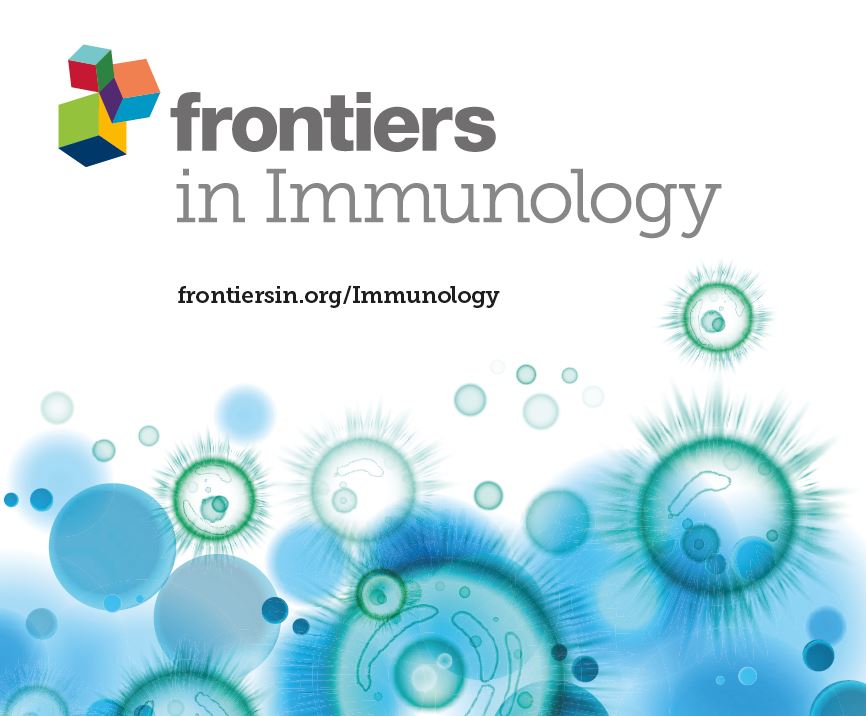Systemic immunostimulation induces glucocorticoid-mediated thymic involution succeeded by rebound hyperplasia which is impaired in aged recipients
IF 5.7
2区 医学
Q1 IMMUNOLOGY
引用次数: 0
Abstract
The thymus is the central organ involved with T-cell development and the production of naïve T cells. During normal aging, the thymus undergoes marked involution, reducing naïve T-cell output and resulting in a predominance of long-lived memory T cells in the periphery. Outside of aging, systemic stress responses that induce corticosteroids (CS), or other insults such as radiation exposure, induce thymocyte apoptosis, resulting in a transient acute thymic involution with subsequent recovery occurring after cessation of the stimulus. Despite the increasing utilization of immunostimulatory regimens in cancer, effects on the thymus and naïve T cell output have not been well characterized. Using both mouse and human systems, the thymic effects of systemic immunostimulatory regimens, such as high dose IL-2 (HD IL-2) with or without agonistic anti-CD40 mAbs and acute primary viral infection, were investigated. These regimens produced a marked acute thymic involution in mice, which correlated with elevated serum glucocorticoid levels and a diminishment of naïve T cells in the periphery. This effect was transient and followed with a rapid thymic “rebound” effect, in which an even greater quantity of thymocytes was observed compared to controls. Similar results were observed in humans, as patients receiving HD IL-2 treatment for cancer demonstrated significantly increased cortisol levels, accompanied by decreased peripheral blood naïve T cells and reduced T-cell receptor excision circles (TRECs), a marker indicative of recent thymic emigrants. Mice adrenalectomized prior to receiving immunotherapy or viral infection demonstrated protection from this glucocorticoid-mediated thymic involution, despite experiencing a substantially higher inflammatory cytokine response and increased immunopathology. Investigation into the effects of immunostimulation on middle aged (7-12 months) and advance aged (22-24 months) mice, which had already undergone significant thymic involution and had a diminished naïve T cell population in the periphery at baseline, revealed that even further involution was incurred. Thymic rebound hyperplasia, however, only occurred in young and middle-aged recipients, while advance aged not only lacked this rebound hyperplasia, but were entirely absent of any indication of thymic restoration. This coincided with prolonged deficits in naïve T cell numbers in advanced aged recipients, further skewing the already memory dominant T cell pool. These results demonstrate that, in both mice and humans, systemic immunostimulatory cancer therapies, as well as immune challenges like subacute viral infections, have the potential to induce profound, but transient, glucocorticoid-mediated thymic involution and substantially reduced thymic output, resulting in the reduction of peripheral naive T cells. This can then be followed by a marked rebound effect with naïve T cell restoration, events that were shown not to occur in advanced-aged mice.全身免疫刺激可诱导糖皮质激素介导的胸腺萎缩,继而出现反弹性增生,而这种增生在老年受体中会受到损害
胸腺是参与 T 细胞发育和产生幼稚 T 细胞的中心器官。在正常衰老过程中,胸腺会发生明显的内陷,从而减少幼稚 T 细胞的输出,导致外周的长寿命记忆 T 细胞占主导地位。在衰老之外,诱发皮质类固醇(CS)的全身应激反应或辐射照射等其他损伤也会诱发胸腺细胞凋亡,从而导致一过性的急性胸腺内陷,并在刺激停止后随之恢复。尽管癌症患者越来越多地使用免疫刺激疗法,但这种疗法对胸腺和幼稚 T 细胞输出的影响还没有得到很好的描述。研究人员利用小鼠和人体系统研究了全身性免疫刺激疗法对胸腺的影响,如使用或不使用激动剂抗CD40 mAbs的高剂量IL-2(HD IL-2)和急性原发性病毒感染。这些方案在小鼠体内产生了明显的急性胸腺萎缩,这与血清糖皮质激素水平升高和外周幼稚 T 细胞减少有关。这种影响是短暂的,随后胸腺会迅速 "反弹",与对照组相比,胸腺细胞的数量会更多。在人类身上也观察到了类似的结果,接受 HD IL-2 治疗的癌症患者的皮质醇水平明显升高,同时外周血中的幼稚 T 细胞减少,T 细胞受体切割圈(TRECs)减少,而T细胞受体切割圈是近期胸腺移居者的标志。在接受免疫疗法或病毒感染之前切除肾上腺的小鼠,尽管经历了更高的炎症细胞因子反应和更严重的免疫病理反应,但仍能免受这种糖皮质激素介导的胸腺内缩的影响。中老年小鼠(7-12 个月)和高龄小鼠(22-24 个月)已经经历了显著的胸腺内陷,基线时外周的幼稚 T 细胞数量也已减少,对它们进行免疫刺激的影响调查显示,它们的胸腺甚至会进一步内陷。然而,胸腺反弹增生只发生在年轻和中年受体身上,而老年受体不仅没有这种反弹增生,而且完全没有胸腺恢复的迹象。这与高龄受体中幼稚 T 细胞数量的长期不足不谋而合,进一步歪曲了已占记忆主导地位的 T 细胞池。这些结果表明,在小鼠和人类中,全身性免疫刺激癌症疗法以及亚急性病毒感染等免疫挑战都有可能诱发深刻但短暂的糖皮质激素介导的胸腺内陷和胸腺输出的大幅减少,从而导致外周幼稚T细胞的减少。随后会出现明显的反弹效应,使幼稚 T 细胞恢复,而这种情况在高龄小鼠中已被证明不会发生。
本文章由计算机程序翻译,如有差异,请以英文原文为准。
求助全文
约1分钟内获得全文
求助全文
来源期刊

Frontiers in Immunology
IMMUNOLOGY-
CiteScore
9.80
自引率
11.00%
发文量
7153
审稿时长
14 weeks
期刊介绍:
Frontiers in Immunology is a leading journal in its field, publishing rigorously peer-reviewed research across basic, translational and clinical immunology. This multidisciplinary open-access journal is at the forefront of disseminating and communicating scientific knowledge and impactful discoveries to researchers, academics, clinicians and the public worldwide.
Frontiers in Immunology is the official Journal of the International Union of Immunological Societies (IUIS). Encompassing the entire field of Immunology, this journal welcomes papers that investigate basic mechanisms of immune system development and function, with a particular emphasis given to the description of the clinical and immunological phenotype of human immune disorders, and on the definition of their molecular basis.
 求助内容:
求助内容: 应助结果提醒方式:
应助结果提醒方式:


